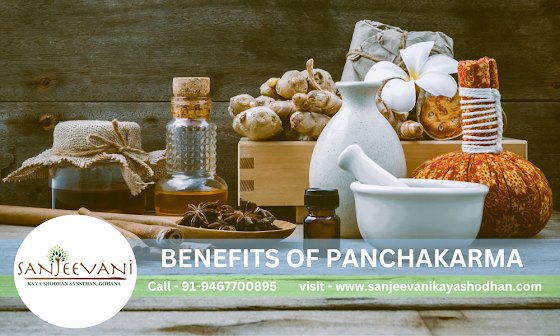Panchakarma: The Ancient Ayurvedic Detoxification and Rejuvenation Therapy
Introduction
Panchakarma is an ancient Ayurvedic detoxification and
rejuvenation therapy rooted in Sanskrit words meaning "five actions."
This traditional practice, dating back thousands of years in Indian medicine,
aims to cleanse and revitalize the body, mind, and spirit by balancing the
three doshas: Vata, Pitta, and Kapha.
At its core, Panchakarma focuses on eliminating
accumulated toxins (ama) and restoring optimal health by addressing the root
cause of illness, not just its symptoms. Through this approach, Panchakarma
helps remove toxins, normalize bodily functions, and enhance the body's natural
healing abilities.
The Five Steps of Panchakarma:
1. Purva Karma (Preparation Phase): This initial
phase prepares the body for detoxification through practices such as oleation
and sweating therapies. Oleation involves applying medicated oils externally
and internally to lubricate the body and loosen toxins, while sweating
therapies, like steam baths or herbal treatments, help open the channels of
elimination.
2. Vamana (Therapeutic Emesis): Vamana targets the
elimination of excess Kapha dosha using emetic herbs that induce vomiting.
Before Vamana, a pre-treatment regimen readies the body for this process,
removing accumulated mucus and toxins from the respiratory and gastrointestinal
tracts and lymphatic systems.
3. Virechana (Therapeutic Purgation): Virechana
focuses on eliminating excess Pitta dosha and toxins through purgative
substances that induce bowel movements, cleansing the gastrointestinal tract.
Pre-treatment includes internal and external oleation and a specific diet to
prepare for purgation, aiding in liver, gallbladder, and intestinal
detoxification.
4. Basti (Medicated Enema): Basti, or enema, is
crucial for balancing Vata dosha, related to the nervous system. Medicated
herbal oils, decoctions, or pastes are introduced rectally to cleanse and
nourish the colon, alleviating constipation, improving digestion, and enhancing
the immune system.
5. Nasya (Nasal Administration): Nasya therapy
involves administering herbal oils or formulations through the nasal passages,
clearing the sinuses, nasal passages, and head region. This step eliminates
toxins and promotes overall well-being, particularly beneficial for respiratory
conditions, allergies, and headaches.


.png)

Comments
Post a Comment